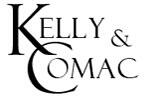HMRC relaxes MTD rules for joint property owners
New HMRC guidance confirms two MTD easements for joint property owners, but a third previously available to self-assessment users is missing. What do you need to know?

HMRC has recently published a digital record-keeping notice in relation to Making Tax Digital for Income Tax Self-Assessment (MTD ITSA). The notice includes, amongst other things, confirmation of two easements for joint property owners. Joint property owners using MTD ITSA can save time by:
- Reporting gross rental income from jointly held properties in their quarterly updates, and report expenses later as part of the year end finalisation process; and
- Creating a single digital record for each category of income from jointly held properties and a single digital record for each category of expense from jointly held properties.
However, the Institute of Chartered Accountants in England and Wales (ICAEW) is concerned that there is no mention of how joint owners should report income if they only receive the net profit share figure. Under self-assessment, it is currently sufficient to report this as a single figure, but it appears this is not being replicated under MTD ITSA (subject to further announcements). It is also unclear whether that relaxation will continue to apply to self-assessment and the ICAEW has approached HMRC for confirmation.
Related Topics
-
Capital gains tax break for job-related accommodation
You’re in the process of selling a property that you bought as your home but because of your job have never lived in. You’ve been told that you’ll have to pay tax on any gain you make, but might a special relief get you off the hook?
-
Should you revoke your 20-year-old option?
Your business has let out a building to a tenant and it is now just over 20 years since you opted to tax the property with HMRC. Should you revoke it so that your tenant no longer needs to pay VAT?
-
Chip shop owner fined £40k for hiring illegal worker
A Surrey fish and chip shop owner has been left in shock after being fined £40,000 for allegedly employing someone who didn’t have the right to work in the UK, even though he conducted a right to work check. Where did this employer go wrong and what can you learn from it?

 This website uses both its own and third-party cookies to analyze our services and navigation on our website in order to improve its contents (analytical purposes: measure visits and sources of web traffic). The legal basis is the consent of the user, except in the case of basic cookies, which are essential to navigate this website.
This website uses both its own and third-party cookies to analyze our services and navigation on our website in order to improve its contents (analytical purposes: measure visits and sources of web traffic). The legal basis is the consent of the user, except in the case of basic cookies, which are essential to navigate this website.